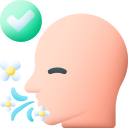Why Is It Essential To Have Good Health?
Most people need to feel good in order to carry out their daily activities in the best possible way. Usually, when you suffer from some ailment or disorder, your willingness and performance to do any activity decreases, making any practice more difficult.

The opposite occurs when people are in good health. When you feel good in body and mind, your abilities to interact with the world and with people increase and you can perform better in all areas of life. In addition, your body functions at its best, and your mind is able to respond quickly to any stimulus.

Having good health allows you to have greater control over your life, even prolong it, and be more valuable to those around you. However, it is important to act accordingly and take actions that help you stay healthy, regardless of whether you are young or old.
What Should You Do To Have Good Physical Health?
To live a whole life and prevent illness and disease, it is necessary to work towards better physical health. Looking and feeling good physically will maximize your capabilities and allow your body to heal faster from wear and tear, even as you age. Here are some things you can do to stay healthy:
- Eat a healthy and balanced diet.
- Maintain a healthy weight according to your age, gender, height, and build.
- Perform physical activity constantly.
- Take care of personal hygiene.
- Visit your doctor regularly for a general check-up.
How Can You Maintain Good Mental Well-Being?
Achieving good mental health can sometimes be more complex than maintaining physical health, mainly because of the modern lifestyle many individuals lead, and daily stress, anxiety, and interactions with others can have a significant impact on an individual’s health. Therefore, it is essential to focus on the following:
- Get a positive attitude.
- Think about the things that interest you.
- Avoid any stressful situations.
- Control your emotions.
- Get the right relationship.
- Use meditation or some other form of relaxation.
Good health requires hard work and a will that you can’t achieve on your own. To achieve it, one must give up such bad habits as smoking and heavy drinking. Eating healthy, leading an active lifestyle, and ensuring emotional, mental and social wellbeing are also important.
The Importance Of Good Physical Health: The Key To Productivity

Physical wellbeing has become an essential factor in professional success. The relationship between physical health and performance has become an increasingly popular topic as more people seek to strike a balance between their work and physical wellbeing

From implementing wellness programs in the workplace to encouraging an active lifestyle, the link between physical health and productivity has been recognized as an essential factor in performance at work

Awareness of the importance of good physical health has become increasingly important. It’s not just about looking good but it’s also about keeping your body in its best shape to enjoy a balanced and active lifestyle.
Good physical health has many benefits, both physical and mental. Not only does regular exercise strengthen muscles
In addition, it also has a direct impact on the ability to carry out daily activities. When a person is in good physical shape, they have more energy and stamina and feel capable of facing the challenges that come their way. This translates into greater productivity at work, better concentration on studies, and greater enjoyment of leisure activities.

 How to diagnose distress in children? Observe the child and his behaviour: he seems to withdraw into himself, he no longer talks as much, he suddenly seems distant, he has outbursts of anger, and a sudden violent attitude.
How to diagnose distress in children? Observe the child and his behaviour: he seems to withdraw into himself, he no longer talks as much, he suddenly seems distant, he has outbursts of anger, and a sudden violent attitude. Huntington’s Disease Related Dementia Huntington’s disease Good mental health is an essential part of healthy child development. It supports the development of positive behaviour and emotional, social and communication skills. It also lays the foundation for good mental health and well-being throughout life.
Huntington’s Disease Related Dementia Huntington’s disease Good mental health is an essential part of healthy child development. It supports the development of positive behaviour and emotional, social and communication skills. It also lays the foundation for good mental health and well-being throughout life.
 What is Dementia?
What is Dementia?

